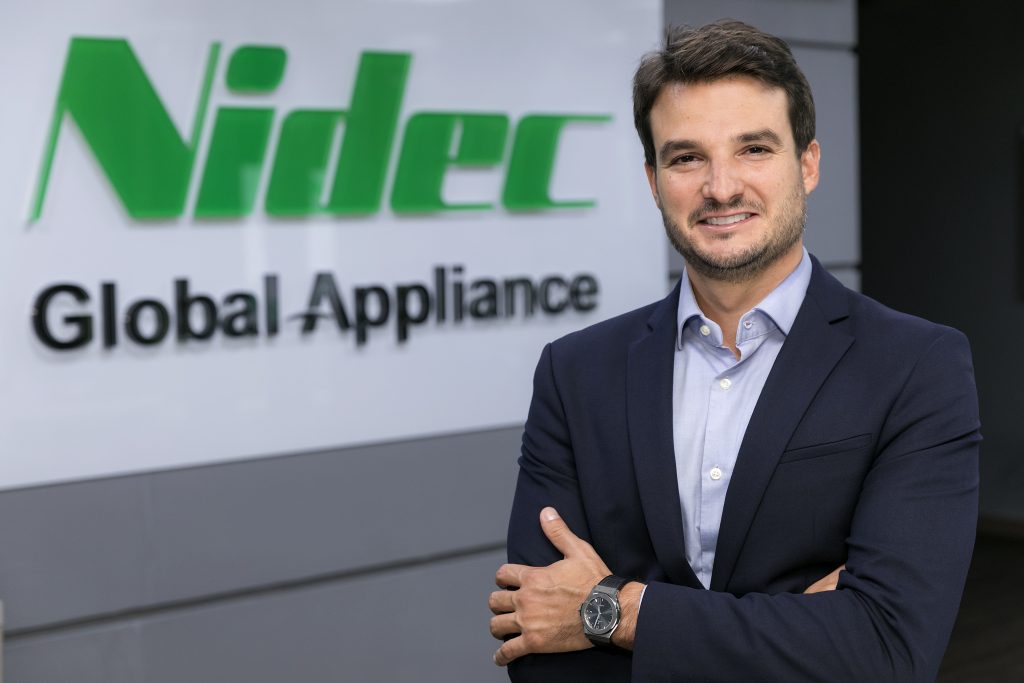Nidec Global Appliance responds to new energy labels with smarter compressors and motors
New energy labels in the European Union raise the issue that more energy efficiency comes from more technology July…

New energy labels in the European Union raise the issue that more energy efficiency comes from more technology
July 2021 – Nidec Global Appliance recently started the production of Embraco FMX compressors in its unit in Austria, and soon the same unit will start producing Embraco VES compressors as well. There is no coincidence in the fact that these are the two variable speed compressors in the portfolio of Nidec Global Appliance, holder of the Embraco brand of refrigeration solutions, that respond to the challenging new energy labels for refrigerators in Europe.
“The new labels affect many of the home appliances powered by Nidec Global Appliance’s portfolio of compressors and motors in Europe, such as fridges and freezers, washing machines and dishwashers as well as refrigeration appliances with a direct sales function (such as supermarket cabinets, refrigerated vending machines, beverage coolers and ice-cream freezers)”, says Guilherme Almeida, Strategic Planning Vice-president at Nidec Global Appliance. “It is a new scenario, for manufacturers and consumers, that we have been preparing for through innovation and trends anticipation. Among the answers to this challenge are technologies such as direct current (DC), present in advanced motors for washing machines and in variable speed compressors”, he explains.
The New Energy Labels for home and some commercial appliances entered into force on March 1st this year, changing the classification of appliances in terms of energy consumption and presenting a challenge to manufacturers. The scale now goes from G to A, replacing the old one that went from D to A+++ for home appliances, and introducing a scale for refrigerators with a direct sales function. The change established new energy consumption standards to each category, and a product that until before March 1st was in the A+++ category can now be in the B, C or D, without any change in its energy consumption.
European consumers are used to buying products in the A category. According to the European Commission website, 90% of the refrigerators and washing machines sold in 2017 were labelled A+, A++ or A+++. “Now, it’s time to monitor the market to see how consumer behaviour will evolve in this scenario and what kind of choices they are going to make. As regulations favour the more technological solutions, these tend to get more competitive and affordable over time”, explains Almeida.
Technology for refrigerators
In the case of residential refrigerators, the components suitable to respond to the energy efficiency demanded by the new classification are variable speed compressors, such as the Embraco FMX and VES product families already mentioned. The FMX comes as an entry level solution, to foster the popularization of variable speed, bringing high energy efficiency combined with affordability. The VES achieves the lowest levels of energy consumption and is the perfect solution to achieve the highest levels of efficiency with lower noise.
FMX and VES run on natural refrigerant R600a (Isobutane), which complies with another important European set of rules, the F-Gas regulation. It has zero ozone depletion potential and among the lowest global warming potential levels amid all alternatives to HFC gases (gradually banned by the regulation).
Washing machines and dishwashers
Other appliances affected by the new energy labels are washing machines and dishwashers. For dryers, the new labels enter into force in 2022. “These appliances have many factors that impact energy consumption, in addition to the motor, such as the amount of water used and the temperature to which the water is heated”, affirms Almeida.
“Here, the technology again evolves towards BPMs, brushless permanent magnet motors”, states Enrico Boscariol, Motors R&D director at Nidec Global Appliance. “These motors have electronic speed and torque controls built in, which delivers more energy efficiency than traditional motors, known as universal”, he adds. Nidec Global Appliance launched the first BPM generation of motors for washing machines around the year 2012 and a second one in 2016. In the first generation, the motor’s weight came down by almost half, from the 5 Kilos of the universal motor to the less than 3.5 Kilos of the BPM, with a gain of energy efficiency of 30%.
In 2020, the company launched its third generation of BPM motors for washing machines. “Our BPM motor allows the appliance to climb up two classes in the new energy label scale in comparison with universal motors”, says Boscariol.
Refrigerating appliances with a direct sales function
For the first time, the new labels also affect applications with a direct sales function, which include supermarket cabinets, refrigerated vending machines, beverage coolers and ice-cream freezers. The implementation process is happening in two waves: in 2021, the scale is entering into force defining minimum standards, and in 2023, the maximum levels of energy consumption will be reduced, demanding more efficiency from products.
“Embraco compressors portfolio to respond to these requirements are the variable speed FMF and the X generation compressors (NEX, NTX, NJX and EHX)”, explains Marino Bassi, Key Account Senior Advisor at Nidec Global Appliance. The FMF family has a combination of variable speed, natural refrigerant R290 (Propane) and the innovative Embraco engineered internal design, making it the most energy efficient compressor in the market in its size and cooling capacity category. With a displacement range from 6 cc up to 15 cc, it is suited for many of the applications covered by the new label.
The X generation are on-off compressors of high energy efficiency, thanks to the use of natural refrigerant R290 and innovative internal designs. They offer the needed cooling capacity for larger applications, such as vertical multi-decks, island display freezers and merchandisers. The use of R290 also contributes to compliance with the European F-Gas regulation.


